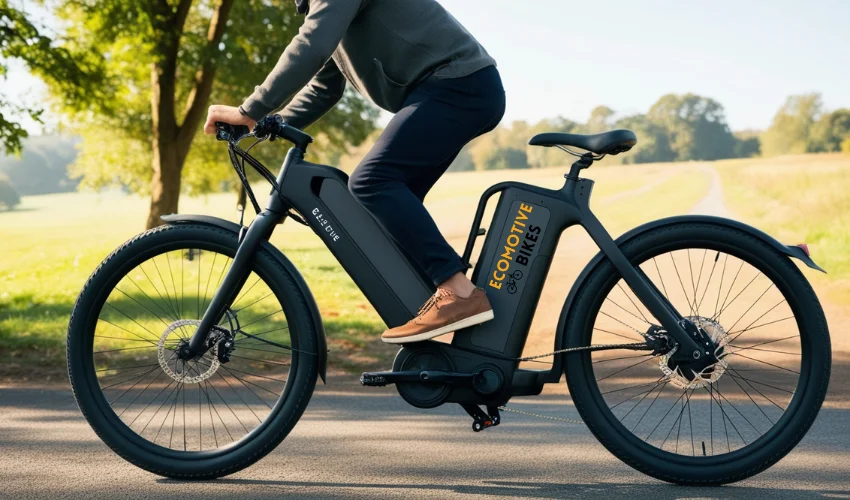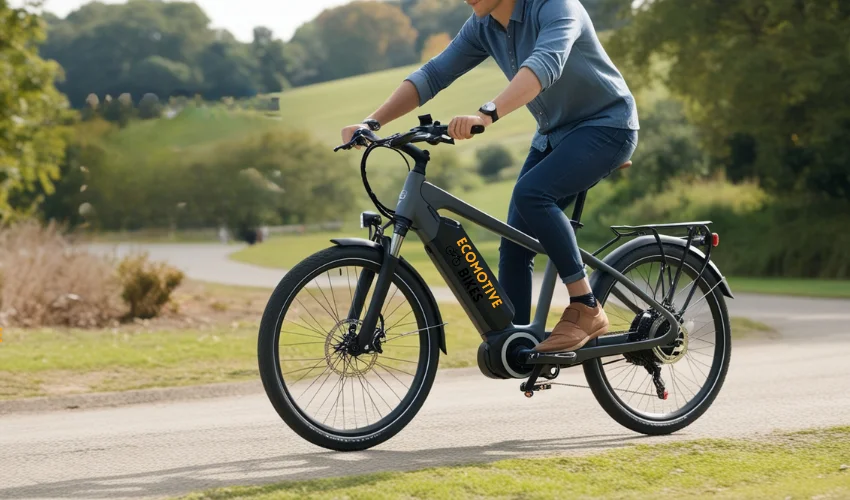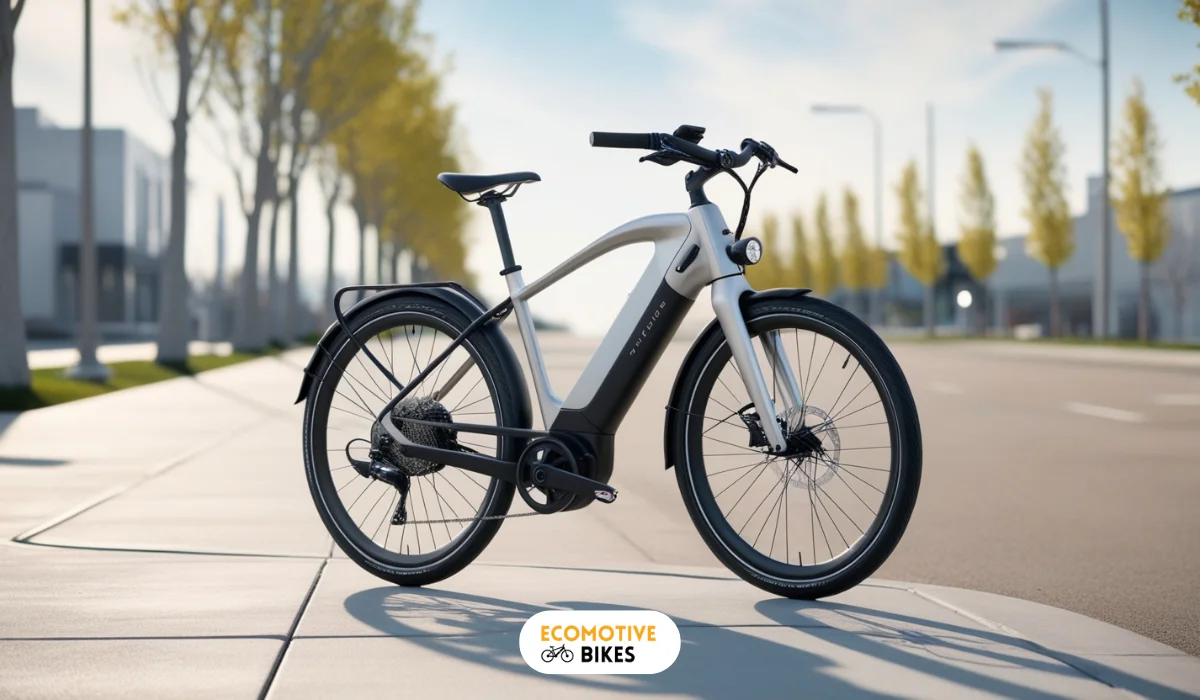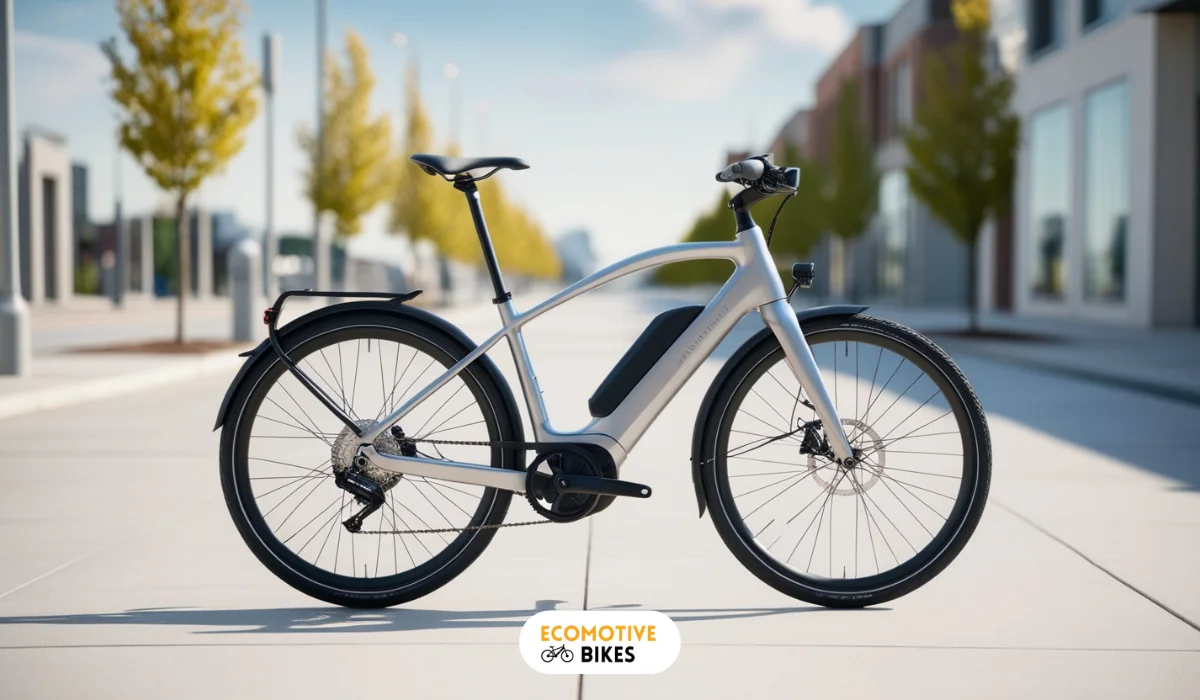How to discharge an e-bike battery safely?
Learn how to discharge an e-bike battery safely to maintain its longevity and performance, with tips on best practices and precautions to avoid potential damage.
Table of Contents
Related Articles:
E-bike battery is the magic ingredient that fuels your electric adventures. But what happens when your trusty steed is fully charged and you need to store it for a while? Discharging an electric bike battery properly is key to maintaining its health and maximizing its lifespan.
This guide unlocks the secrets of how to discharge an electric bike battery safely and effectively, ensuring your e-bike is ready to roll whenever the wanderlust strikes!

Why should you discharge an e-bike battery before storing it?
The proper storage of your e-bike battery is crucial to maintain its health and extend its lifespan. Lithium-ion batteries, like those used in e-bikes, can deteriorate quickly if stored fully charged or completely discharged for an extended period.
When you’re not planning to use your e-bike for an extended period, it’s necessary to discharge the battery to a certain level before storing it. Otherwise, you may be reducing its overall capacity and potentially causing damage.
Factors to consider for proper storage of e-bike battery
Storage conditions play a significant role in maintaining your e-bike battery’s health. Consider the following factors:
- Temperature: Store your battery in a room with a normal temperature range (between 60°F to 70°F or 15°C to 20°C) to prevent damage from extreme temperatures.
- Humidity: Avoid storing your battery in humid environments to prevent moisture buildup.
- State of charge: Store your battery with a charge level between 20% and 50% to prevent overcharging or complete discharge.
The ideal storage conditions will vary depending on the type of battery you have, so it’s necessary to consult your e-bike’s user manual or manufacturer’s guidelines for specific storage recommendations.

How to discharge the battery of an electric bike?
To discharge your e-bike battery for storage, be properly prepared to ensure a safe and efficient process. Here is what you need:
- E-bike battery
- Lamp holder
- Lamp bulb
- Some wires
Step 1: Cable Preparation
Before connecting to the battery plate, we’ll need to prepare a cable. Here’s what you’ll do:
- Strip the cable: Carefully remove about two centimeters of insulation from the cable’s end, exposing the inner wires. This stripped portion will allow for a secure connection to the battery plate. Be mindful to avoid damaging the wires themselves during this process.
- Craft a hook: For a stable connection, bend the stripped cable into a hook shape. This thicker profile provides a better grip on the battery plate, preventing accidental disconnect during discharge. Take your time and ensure the hook is sturdy.
Remember: Always prioritize safety when working with electrical components. Handle the cables and battery with care to avoid any potential risks.
Step 2: Connect to a load
Unlike simply letting the battery drain on its own, connecting it to a load allows controlled discharge. Our goal is to reach the recommended 50% charge level for optimal storage.
Step 3: Secure the cable connection
Gently insert the hooked wires (polarity doesn’t matter) into the designated positive and negative contacts on the battery plate. Ensure they are firmly secured to avoid loose connections that could disrupt the discharge process.
Step 4: Discharge with a lamp
Here’s a simple yet effective way to discharge your battery:
- Connect to a lamp: Attach the battery wires to a table lamp or lamp holder.
- Choose the right bulb: Screw in a traditional, non-LED bulb with a high wattage (consuming more power). This will expedite the discharge process. However, safety is paramount. Use a bulb with a wattage around 10-20% of your battery’s capacity. For instance, a 10Ah battery should be paired with a 1-2 watt bulb to ensure a slow and controlled discharge.
Step 5: Monitor the discharge process
The key to knowing when your battery reaches the optimal 50% charge level lies in monitoring its voltage. Use a multimeter for the purpose. Once the voltage dips to approximately half of the nominal voltage, you’ve successfully discharged the battery to the recommended 50% level for storage. Disconnect everything, and your e-bike battery is now prepped for a long, healthy hibernation! Consult your charger’s manual to determine the nominal voltage for your specific battery.

Understanding battery voltage
Despite the importance of storing your e-bike battery at 50% capacity, many riders are unsure about how to determine the optimal voltage for storage. We have probed into the world of battery voltage and explored how to calculate the ideal voltage for your specific battery.
How to determine the nominal voltage of an electric bike battery?
To determine the nominal voltage of your battery, i.e., the voltage rating stated on the battery label, check your battery charger and compare the voltage rating on the charger with the one on the battery label. If they match, the label voltage is likely the maximum voltage. If the charger voltage is higher, the label voltage is probably the nominal voltage.
How to calculate the voltage at 50% capacity?
To calculate the voltage at 50% capacity, know the maximum voltage of your battery and the voltage of a single cell. Most e-bike batteries have cells with a voltage of 4.2V when fully charged and 3.6V when at 50% capacity. You can use the following formula to calculate the voltage at 50% capacity:
- Maximum voltage ÷ 4.2V = number of cells
- Number of cells × 3.6V = voltage at 50% capacity
Voltage at 50% capacity is a critical factor in storing your e-bike battery. Storing your battery at 50% capacity helps to prolong its lifespan and maintain its overall health.
Learn how to clean bike battery terminals safely before storing them.
Tips for using a multimeter
Using a multimeter can seem intimidating, but with these tips, you’ll be a pro in no time. Always ensure the multimeter is set to the correct voltage range to avoid damaging the device. Here are some additional tips:
- Choose the correct multimeter mode: Select the DC voltage mode (V) to measure the battery’s voltage.
- Connect the leads correctly: Attach the positive lead (red) to the battery’s positive terminal and the negative lead (black) to the negative terminal.
- Take multiple readings: Take several readings at different intervals to ensure accurate results.
- Any inconsistencies in the readings may indicate a faulty multimeter or incorrect connections.
Multimeter readings can vary depending on the device and battery type. To ensure accurate results, consult your multimeter’s user manual and understand how to interpret the readings. Additionally, make sure to follow proper safety precautions when working with electrical components.

Tips to discharge a battery
For safe and effective e-bike battery storage, there are several tips and factors to consider:
- Maintain a stable connection between the battery and the discharging device
- Avoid extreme temperatures during storage
- Store the battery at 50% capacity
- Monitor the battery’s voltage and state of charge
- Keep the battery away from flammable materials
Final Word: How to discharge an e-bike battery safely?
That’s it! With a little preparation and these steps as your guide, you’ve successfully discharged your e-bike battery for storage. Now, your trusty steed can rest assured, knowing its battery is primed for a long and healthy life. So, when the itch for adventure strikes again, you’ll be ready to hit the road with a fully optimized e-bike, ready to conquer any journey!





